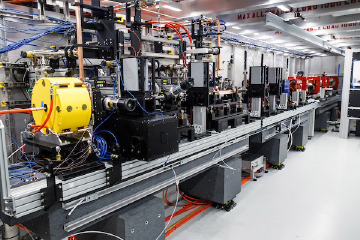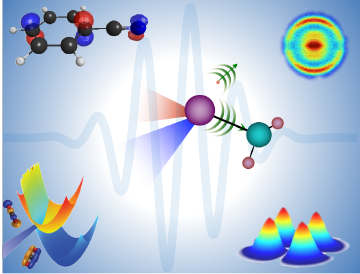THE ASU COMPACT X-RAY FREE ELECTRON LASER (CXFEL)
In a building purpose built for its installation, a compact free electron x-ray laser, or CXFEL for short, is being assembled by a multidisciplinary team of scientists and engineers. The CXFEL is the first of its kind, and when fully operational the team expects it will lead to breakthroughs in fields as diverse as molecular biology, medical imaging, exploration geology, material science, astrophysics, renewable energy, quantum computing and even art history. The uniqueness of the CXFEL is in its compact size and relatively low cost. A traditional XFEL requires beam lines to be built in tunnels more than a mile long at costs that can exceed billions of dollars. In contrast, due to some clever physics in its design the ASU CXFEL beam can be produced in a laboratory just 10 m long. And while the price tag of the first prototype machine is expected to be close to $100M, successive machines will be lower in cost, something comparable to a magnetic resonance imaging (MRI) instrument, meaning that one day a CXFEL might be available at your local hospital.
The workings of the CXFEL are a good example of ‘big science’ in action. As designed, the beam starts with packets of electrons generated by focusing extremely short ultraviolet laser pulses onto a copper surface. These electrons are accelerated to nearly the speed of light by a 1-meter-long linear accelerator and strong microwave-frequency electromagnetic fields with megawatt peak power. Next, they form a directed beam by passing a series of precision-aligned magnets. The resulting electron beam is blasted by an intense optical laser, which imparts an undulating motion on the electrons resulting in strong and predictable X-ray emission. And a critical component that ensures the laser action, is itself an example of ‘tiny science’, a nanoscale silicon grating that modulates the intensity of the diffracted electrons. In a clever piece of physics called admittance exchange, the spatial modulation in the electron intensity is used to generate a beam of x-ray pulses with coherent control of their phase, frequency, bandwidth, pulse length and amplitude – a true x-ray laser. The CXFEL has already achieved its initial goals, with near relativistic electrons generated in May 2021 and now the demonstration of a compact x-ray light source. With the next round of funding the world’s first CXFEL will be ‘lit up’ on the ASU Tempe campus. The following videos explain more about the CXFEL and highlight some of the exciting developments on its path to completion.

The ASU CXFEL shrinks a conventional mile-long XFEL to just 30 ft or so.

The x-ray pulses generated by the CXFEL will allow studies of electron dynamics at the attosecond (a millionth of a trillionth of a second) timescale.
External Links: